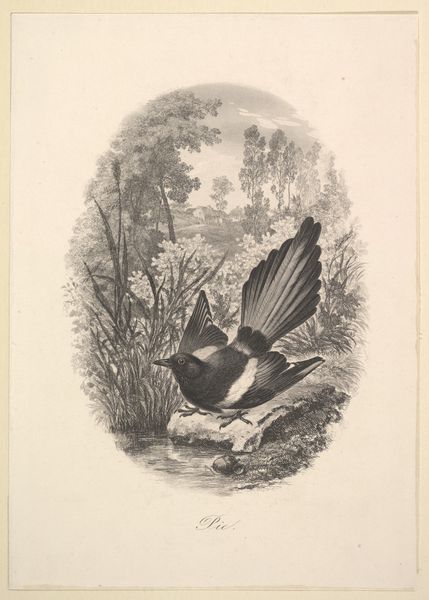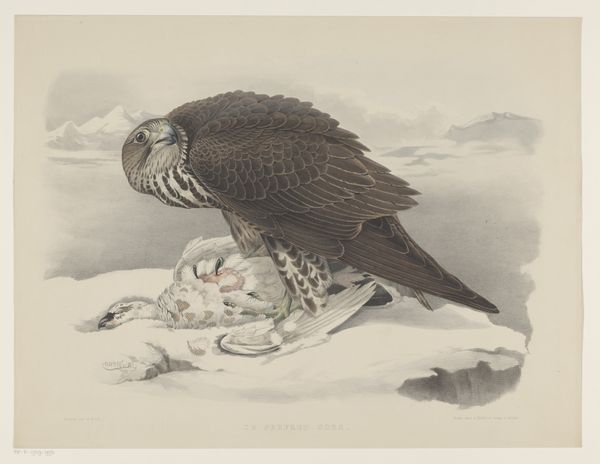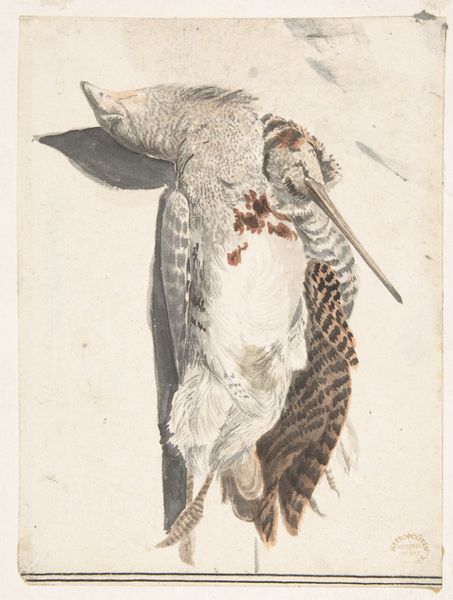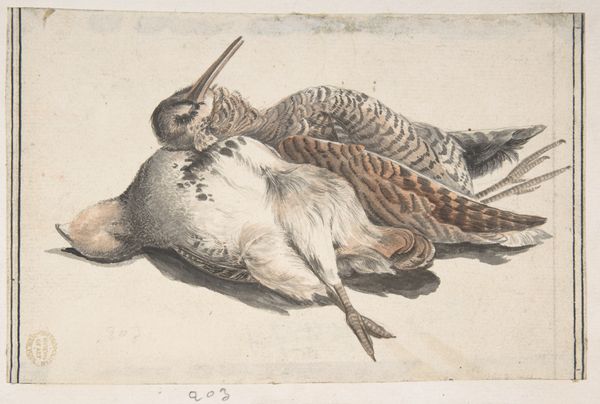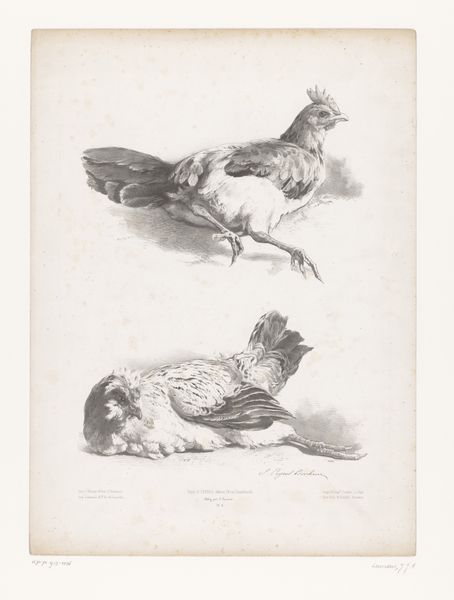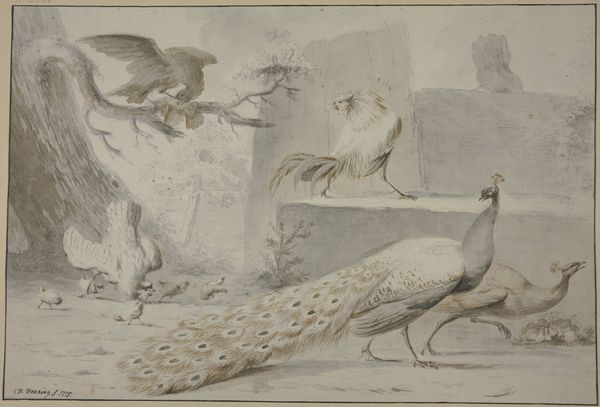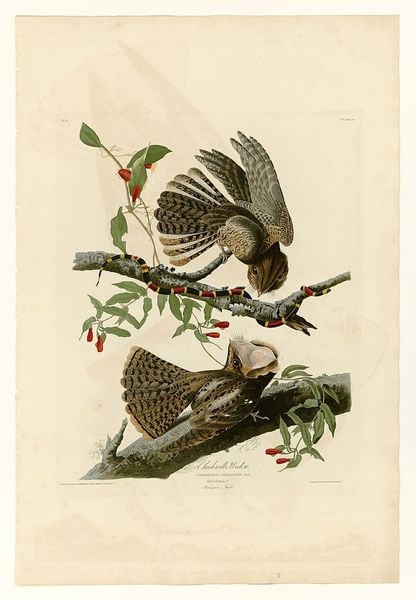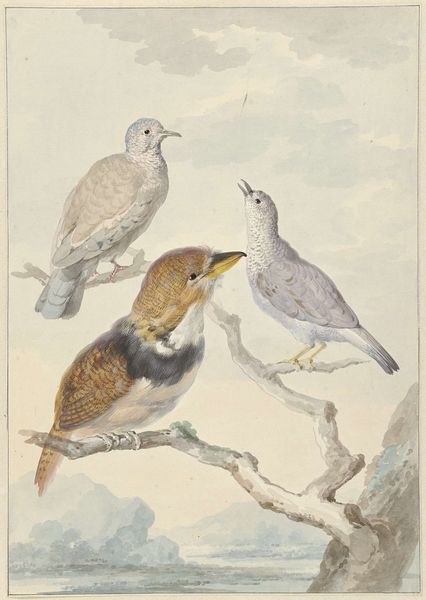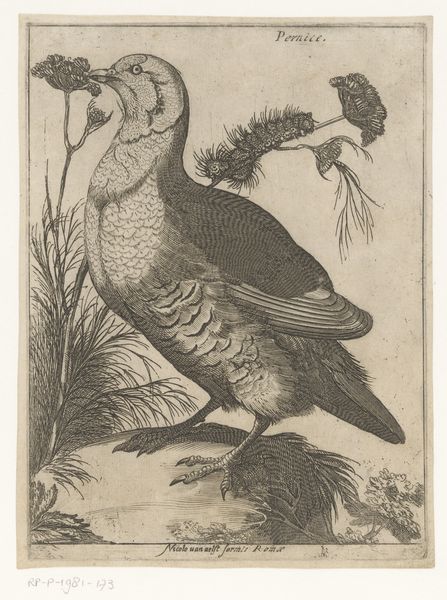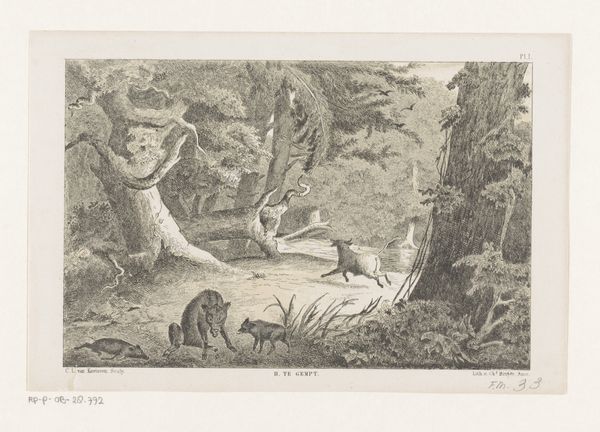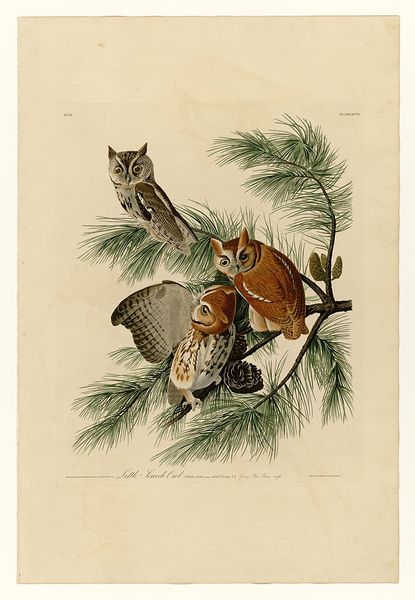
drawing, watercolor, pencil
#
drawing
#
landscape
#
figuration
#
watercolor
#
coloured pencil
#
pencil
Dimensions: height 492 mm, width 354 mm
Copyright: Rijks Museum: Open Domain
Curator: Well, this is a fascinating piece: "Havik bewaakt zijn prooi," or "Hawk Guarding Its Prey," a watercolor, pencil, and colored pencil drawing created around 1824. It’s currently housed at the Rijksmuseum. What strikes you about it? Editor: Initially, the stark reality of the food chain jumps out. It's brutal, raw—that sharp-eyed hawk over its kill feels almost… oppressive. Curator: Yes, and let's consider the cultural context here. Drawings like this, particularly of animals in naturalistic settings, gained traction as scientific illustration merged with artistic practice. Think of the burgeoning scientific societies of the early 19th century. This wasn’t simply about aesthetic beauty. Editor: True, but the "natural" setting feels deliberately composed. There’s that strategically placed tree and softly rendered background that soften the brutal act occurring center-frame. Does this soften an otherwise potentially aggressive posture? Curator: I'd argue that this composition serves a didactic purpose, rather than just aiming for aesthetics or softening aggression. What does that positioning represent in relation to nature, domination, survival? Who holds power? The drawing subtly reflects and reinforces early 19th-century views of humanity's dominion over the natural world. The museum system further supports the artwork by maintaining colonial power structures as an example for people to see everyday. Editor: That makes sense, viewing the artwork’s power from an angle of environmental activism. It makes me also wonder how such artwork affected views about class during this historical moment. Do we believe class constructs would view this predation by the bird-of-prey as a sign? How do the feathers splayed across the scene communicate status or hierarchy to diverse groups viewing this artwork then and now? Curator: Certainly, analyzing the political implications brings nuance to how we understand depictions of nature. By dissecting the intersections of colonialism, the rising capitalist structures, and class-based ideology, this natural drawing turns a harsh lens back upon us. Editor: Ultimately, it speaks volumes about the relationship between humanity and the natural order, the delicate balance and imbalances both depicted. A surprisingly loaded statement for what at first seems like a straightforward scene. Curator: Exactly! It pushes us to consider what isn't being shown, and whose voices—or squawks—are being silenced. It also emphasizes the long arc of history, showing nature itself at its own merciless whims.
Comments
No comments
Be the first to comment and join the conversation on the ultimate creative platform.
